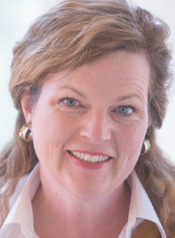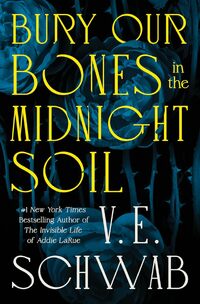In our March women’s fiction column, we’re talking with author Elise Hooper.
Her debut novel THE OTHER ALCOTT was a nominee for the 2017 Washington Book Award. Three more novels—LEARNING TO SEE, FAST GIRLS, and ANGELS OF THE PACIFIC—followed, all centered on the lives of extraordinary but overlooked historical women. Her next book, THE LIBRARY OF LOST DOLLHOUSES will be released by William Morrow on April 1, 2025.
Thanks for making time to talk with us today, Elise. Please, give us a quick synopsis of your new book.
THE LIBRARY OF LOST DOLLHOUSES is a dual-timeline novel in which a museum curator named Tildy Barrows discovers a pair of elaborately crafted dollhouses in an old library in San Francisco. After finding clues hidden within these remarkable miniatures, Tildy sets out to decipher the secret history of the dollhouses and the mysterious artist who created them.
Tildy’s journey introduces her to a world of ambitious and gifted women in Belle Époque Paris, a group of scarred World War I veterans in the English countryside, and Walt Disney’s bustling Burbank studio in the 1950s. As Tildy unravels the mystery, she finds not only inspiring, hidden history, but also a future for herself—and an astonishing familial revelation.
What sparked the idea for this book?
An old family dollhouse. When I was seven, I received a dollhouse for Christmas. It had been built in the late 1800s for my great grandmother and passed down to my grandmother, then my mother, then me. As a girl, I played with that dollhouse for hours and learned many creative skills—like sewing, knitting, painting, and basic woodworking—to make tiny furnishings for the dollhouse. It taught me to view at the world as a place of possibility, where anything could be adapted for the dollhouse. During that time I spent playing, I also learned how to tell stories, and this turned out to be a skill that shaped my interest in writing.
Decades later when I finished my fourth novel and was considering what to write next, I thought about how much my old dollhouse charted the course for my creative life and decided to write about it.
Obviously, you had to do a deep dive into the history and purpose of dollhouses to write this story. Tell us more about that, and about your research process.
As part of my research I restored my old family dollhouse. It was a mess. Peeling and stained wallpaper, broken pieces, decrepit furniture—everything needed help, so I brought it back to life, and I developed ideas for my book’s characters and plot as I did.
I also read about the history of dollhouses and how their purpose has changed over the years. For several centuries, women throughout Europe used dollhouses as status symbols to show off their wealth. In Germany young women used dollhouses to learn how to run a home. It wasn’t until mass manufacturing after World War II that dollhouses as toys became widespread.
After learning about an unusual miniaturist named Frances Glessner Lee (1978-1962) who built tiny dioramas of crime scenes to help train law enforcement agents, I knew the dollhouses in my story would also hold clues that would reveal the hidden truths about the women who had once owned them.
While writing this book, you did a lot of work on your family dollhouse, and sharing your progress through your social media channel. It was fascinating to watch! I found myself searching out your posts first thing every day, hoping for a dollhouse update, and I’m sure I wasn’t the only one.
Tell us about how people have responded to your dollhouse journey, and what impact that’s had on you personally. Will there be more dollhouses in your future?
First of all, thank you! It’s been a fun adventure and I’ve made a lot of friends online through the world of miniatures. I’ve also discovered how much I’ve enjoy working on dollhouses. They check a lot of boxes for me: working with textiles, painting, building—these are the types of things I like to do for fun. I minored in art at college, so I’m finally using that part of my degree! And I’m definitely not done. In June I’m heading to coastal Maine to spend a week at a program run by the International Guild of Miniature Artisans to make more miniatures. I’m also currently restoring an old dollhouse to be used to house a miniature art show of paintings created by several artist friends. We’re planning for our exhibit to be displayed this summer at a local art walk.
Why do you think people find dollhouses so appealing?
I think miniatures provide wonder and whimsy. They can also offer a sense of control when life feels uncertain and hard.
During my research on the history of dollhouses, I noticed that miniatures tend to grow in popularity during difficult times. For example, at the end of World War I Queen Mary commissioned a grand dollhouse from England’s leading artisans as a way of lifting the nation’s spirits. After the dollhouse was finished, over a million and half people showed up to see it exhibited. In the United States, the Art Institute of Chicago’s well-known Thorne Rooms and Colleen Moore’s Fairy Castle were created and exhibited during the Great Depression to raise money for charitable causes. And then in 2020, while people were stuck in their homes during the pandemic, another flourishing of modern miniatures took hold once again and captured people’s imaginations on social media.
The fictional library in your book is based on a real library. Tell us which one, and what made is such a perfect model for Tildy’s library.
I grew up outside of Boston and visited the Isabella Stewart Gardner Museum many times, enjoying not only the fabulous collection of art, but the remarkable and quirky woman who built it. While I imagined my story in 2020, I capitalized on these fond memories and imagined an heiress who founded a library in San Francisco filled with books, paintings, sculptures, maps, books, artifacts…and dollhouses.
How can readers learn more about you and your books?
Follow me on Instagram for reading recommendations and a lot more dollhouse projects. My website also has the latest news about my books and events.

When a young librarian discovers historic dollhouses in a hidden room, she embarks on an unexpected journey that reveals surprising secrets about the lost miniatures.
Tildy Barrows, Head Curator of a beautiful archival library in San Francisco, is meticulously dedicated to the century’s worth of inventory housed in her beloved Beaux Art building. She loves the calm and order in the shelves of books and walls of art. But Tildy’s life takes an unexpected turn when she, first, learns the library is on the verge of bankruptcy and, second, discovers two exquisite never-before-seen dollhouses.
After finding clues hidden within these remarkable miniatures, Tildy sets out to decipher the secret history of the dollhouses, aiming to salvage her cherished library in the process. Her journey introduces her to a world of ambitious and gifted women in Belle Époque Paris, a group of scarred World War I veterans in the English countryside, and Walt Disney’s bustling Burbank studio in the 1950s. As Tildy unravels the mystery, she finds not only inspiring, hidden history, but also a future for herself—and an astonishing familial revelation.
Spanning the course of a century, The Library of Lost Dollhouses is a warm, bright, and captivating story of secrets and love that embraces the importance of illuminating overlooked women.
Women's Fiction [William Morrow Paperbacks, On Sale: April 1, 2025, Paperback / e-Book , ISBN: 9780063382145 / ]

Although a New Englander by birth, Elise Hooper lives with her husband and two young daughters in Seattle, where she teaches history and literature.

When not curled up with a good book, Marie Bostwick can usually be found in her office, trying to write one.
A New York Times and USA Today bestselling author of eighteen uplifting works of historical and contemporary fiction, Marie’s books are beloved by readers across the globe.
Drawing on her lifelong love of quilting and her unshakable belief in the power of sisterhood, Marie’s popular Cobbled Court Quilt series has been embraced by quilters and non-sewers alike. Her standalone books have also found a passionate following among lovers of women’s fiction. Marie’s novel, The Second Sister” was adapted into the 2018 Hallmark Hall of Fame feature film “Christmas Everlasting”, starring Patti LaBelle. Marie’s most recent novel, Hope on the Inside, was published in March 2019 and was chosen as a Reader’s Digest “Select Editions” book.
Marie’s latest endeavor is Fiercely Marie, a lifestyle blog that encourages women to live every minute and love every moment. She is currently working on her next novel, “The Restoration of Celia Fairchild”, which will be published by William Morrow in the spring of 2021.
Marie lives in Washington state with her husband and a beautiful but moderately spoiled Cavalier King Charles Spaniel.
No comments posted.


 © 2003-2025 off-the-edge.net
all rights reserved Privacy Policy
© 2003-2025 off-the-edge.net
all rights reserved Privacy Policy